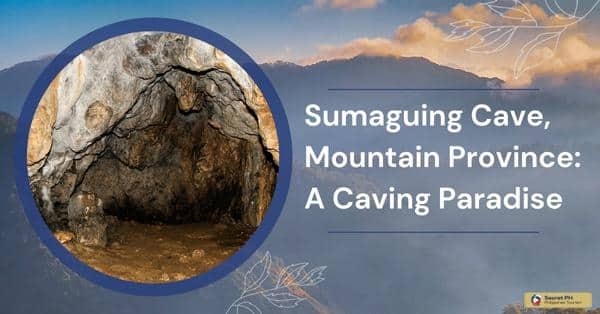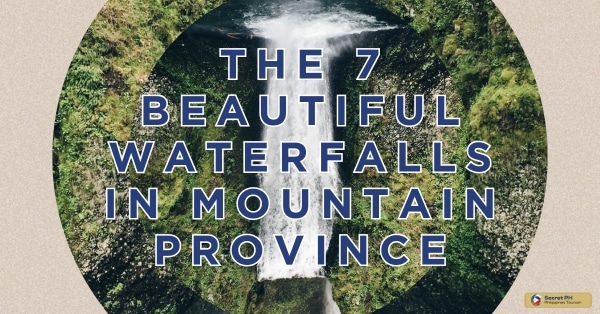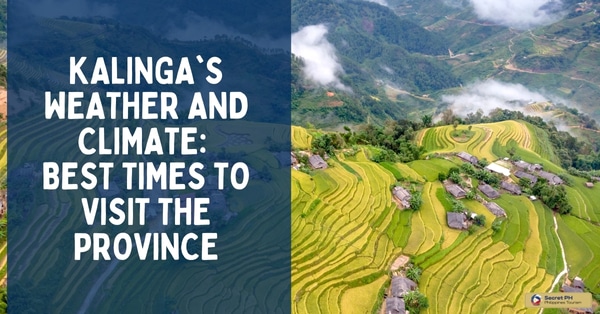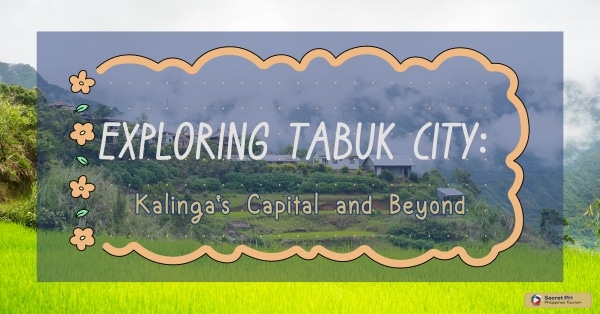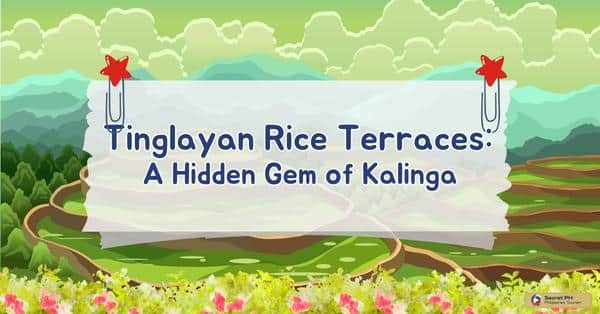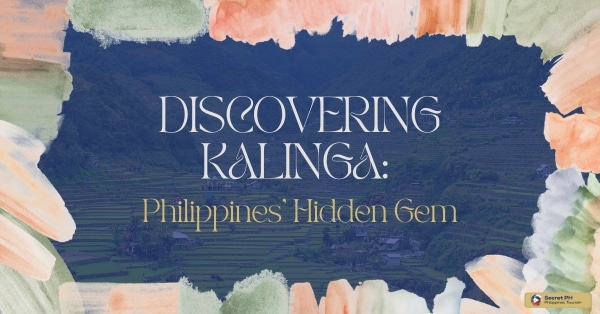Exploring the Philippine outdoors is a unique experience. With its exotic wildlife, lush green forests, and stunning beaches, the Philippines offers something for everyone. Whether you’re looking for adventure or relaxation, the country has plenty of activities to keep you busy.
To make sure your trip is as enjoyable as possible, here are some tips for exploring the Philippine outdoors.
Planning Your Outdoor Adventure
Exploring the Philippines as a tourist is an exciting adventure. From hidden beaches, waterfalls, and nature reserves, there are so many breathtaking places to see and new experiences to enjoy.
Like any activity or outing, the key to an enjoyable outdoor adventure is planning. Before you set out on your exploration of the Philippines, make sure:
- You thoroughly research the areas you want to visit
- Get familiar with rules for accessing certain areas
- Understand what dangers may be present
Additionally, map out all your routes in advance and plan for any logistical needs – such as food and water that will be needed throughout the trip. With careful preparation, your outdoor logistics will fall into place allowing more time to truly immerse yourself in this spectacular destination!

Staying Safe and Healthy in the Outdoors
The Philippines is home to some of the most beautiful outdoor spaces in the world. Whether you’re exploring lush forests, white sand beaches, majestic mountains, or rugged terrain, being safe and healthy while outdoors is of utmost importance. Below are the must-follow tips:
Use insect repellent: Mosquito-borne illnesses are common in the Philippines, so use a repellent to protect yourself.
Wear appropriate clothing and footwear: Dress for the weather and the terrain to protect yourself from the sun, heat, and rough surfaces.
Bring a first aid kit: Pack a basic first aid kit including bandages, pain relievers, and any personal medications you may need.
Be aware of the weather forecast: Keep an eye on the weather forecast and be prepared for sudden weather changes.
Be cautious when swimming: The ocean and rivers can be dangerous, so be careful when swimming.
Respect local laws and customs: Familiarize yourself with local laws and customs, particularly in sensitive areas such as wildlife reserves and indigenous communities.
Follow local guide’s advice: If you’re hiring a guide, listen to their advice and follow their instructions.
Do not feed wild animals: Feeding wild animals can be harmful to both animals and humans. Also, learn about the animals that are common in the area you will be visiting, and be aware of the risks they may pose.
Carry a charged mobile phone and a noise-making device: Make sure you have a way to call for help if needed. Also, let someone know your plans, including your itinerary and expected return time.
Know emergency service contact details: Learn about the local emergency services and know how to contact them if needed.
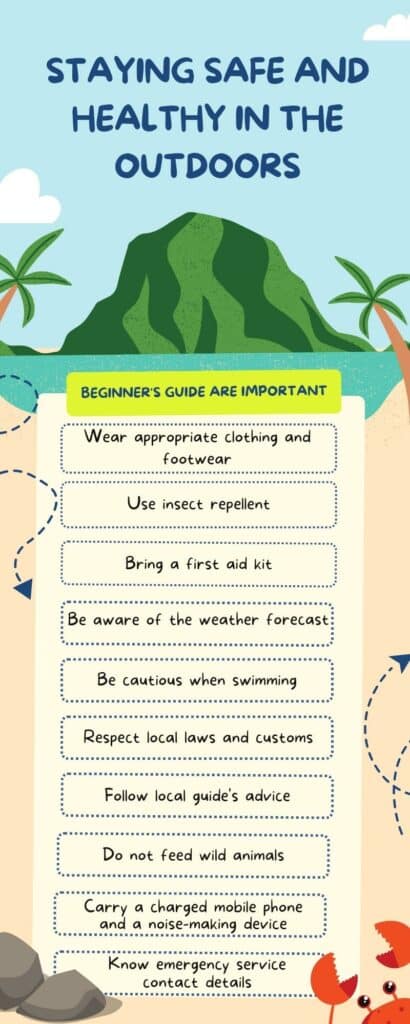
Understanding the Local Weather and Climate
The Philippines is known for its tropical climate, with warm temperatures all year round and plenty of sunshine. However, the weather in different regions of the country can vary drastically.
When exploring the Philippines as a tourist, it’s important to keep an eye on local forecasts so you’re prepared for any monsoons, typhoons, or sudden changes in temperature that may arrive unexpectedly.
Be sure to check local news before your visit so you can plan accordingly and get the most out of your trip!

Exploring the Natural Beauty of the Philippines
The Philippines offers many different ways to explore its natural beauty and is a great destination for any type of traveler. Whether you’re looking for an outdoor adventure, a relaxing getaway, or some cultural exploration, here’s a list of the highlights:
For Outdoor Adventures – Go hiking in Cebu and Davao to take in stunning vistas, or visit the rainforests and coral reefs for wildlife spotting.
For Relaxation – Enjoy pristine beaches from Palawan to Boracay, or simply soak up the sun on the deck.
For Culture – Get to know local tribes in Northern Philippines or tour colonial cities like Vigan.
So why not start planning your trip today and discover all that this beautiful country has to offer?

Discovering the Cultural and Historical Sites
Exploring the cultural and historical sites of the Philippines is a must when touring this unique country. From ancient fortresses to colonial churches, the Philippines holds a wealth of history and culture to discover. Here’s a list of some of the top attractions you won’t want to miss:
Intramuros – Originally built by Spanish colonizers in the 16th century, Intramuros boasts art galleries, museums, vibrant street markets, and beautiful churches such as San Agustin for tourists to explore.
Fort Santiago – Built-in 1593 by Miguel de Legazpi, Fort Santiago is considered one of the oldest Spanish citadels in Asia with its complex network of defenses and dungeons located on the Pasig River.
Banaue Rice Terraces – Known as an 8th Wonder of the World, it is an engineering marvel stretching over 2,000 km along steep mountainsides that were hand carved 2,000 years ago by indigenous people in northern Luzon.
Vigan City – This UNESCO World Heritage site offers tourists a glimpse back into old Spanish colonial life with its cobblestone streets lined with ornate heritage structures reminiscent of life during 18th century Europe.
Baroque Churches – The Philippines has many beautifully preserved Catholic baroque-style churches scattered throughout their islands most notably in Ilocos Norte and Bohol provinces which have been declared as UNESCO World Heritage Sites for their cultural richness and importance in Philippine history.

Top Outdoor Destinations in the Philippines
Spending time outdoors in the Philippines is a must-do for all tourists looking to explore its natural beauty. Here are some of the top outdoor destinations you won’t want to miss:
Mount Pulag – While being the third highest mountain in the Philippines, it is known as one of the most accessible with its breathtaking summit that gives visitors stunning views of sunrise and sunsets on Luzon Island.
Subterranean River National Park – Located within Puerto Princesa City, this UNESCO Heritage Site features an 8.2 km long underground river with limestone formations and a rich diversity of native wildlife species.
Cagban Beach – Found on Boracay Island, this beach offers travelers a chance to relax and take in its crystal clear waters, soft white beaches, and stunning ocean views.
Kawasan Falls – This three-tiered cascade located near Badian serves as an ideal spot for swimming, canyoneering, and other water activities among lush tropical foliage and natural pools suitable for both adults and children alike.
Coron Island – An archipelago home to spectacular lagoons and caves which provide visitors with incredible diving experiences along its diverse coral reef systems teeming with marine life such as turtles, sharks, manta rays, and colorful fish.

Supporting Sustainable Tourism and Conservation
Supporting sustainable tourism and conservation is an important aspect of exploring the Philippines as a tourist. The Philippines is home to a diverse array of natural and cultural heritage, and we must take steps to preserve these resources for future generations.
Choose Eco-Friendly Accommodations
One way to support sustainable tourism and conservation is to choose eco-friendly accommodations and tour operators that prioritize conservation and sustainability.
This can include staying in lodges or resorts that use renewable energy sources, have water-saving systems, and support local communities.
Visiting Protected Areas and National Parks
Another way to support conservation is to visit protected areas and national parks, which are managed by the government and local organizations to protect the natural environment and wildlife.
By visiting these areas, you can support conservation efforts and help generate income for local communities that depend on tourism.
Additionally, it’s also important to be mindful of your actions while exploring the Philippines and be respectful of the local culture and environment. This includes not littering, not disturbing wildlife, and not buying products made from endangered species.
By supporting sustainable tourism and conservation, we can help ensure that the natural and cultural heritage of the Philippines is preserved for future generations to enjoy.

Tips for Navigating Rural and Remote Areas
Navigating rural and remote areas in the Philippines can be challenging, but with a bit of preparation and the right mindset, it can also be a rewarding experience. Here are a few tips to keep in mind when exploring rural and remote areas of the Philippines:
Research the area before you go: Learn as much as you can about the area you plan to visit, including the local culture, customs, and language. This will help you better understand and appreciate the place you’re visiting.
Be prepared for basic needs: Make sure you have enough food, water, and other essentials for your trip. It’s also important to carry a first aid kit, a flashlight, and a fully charged mobile phone.
Respect local customs and traditions: Rural and remote areas may have different customs and traditions than what you’re used to. Showing respect and understanding for these customs can help you make a positive impression and avoid any misunderstandings.
Be flexible: Rural and remote areas may not have the same level of infrastructure as more developed areas, so be prepared to encounter unexpected situations and be flexible in your plans.
Be aware of your surroundings: Be mindful of your surroundings and be aware of any potential hazards, such as dangerous animals, rough terrain, and unexpected weather conditions.
By keeping these tips in mind, you can have a safe, enjoyable, and authentic experience when exploring rural and remote areas of the Philippines.

Finding Local Guides and Resources
Below are the lists of where you can find local guides and resources when exploring the Philippines:
Tourism Offices: Local tourism offices in the Philippines are a great resource for finding local guides and information about the area you’re visiting. They can provide you with maps, brochures, and recommendations for local guides, tour operators, and accommodations.
Online Reviews: Websites such as TripAdvisor, Yelp, and Google Reviews can be useful tools for finding local guides and resources. You can read reviews from other travelers and get a sense of the quality and reliability of different guides and tour operators.
Local Hotels and Resorts: Many hotels and resorts in the Philippines have staff that is knowledgeable about the local area and can provide you with information and recommendations for local guides and resources.
Local Travel Agencies: Local travel agencies can be a great resource for finding local guides and information about the area you’re visiting. They can provide you with maps, brochures, and recommendations for local guides, tour operators, and accommodations.
Word of mouth: Ask around, ask locals, friends, or other travelers who have been to the place you are visiting. They can give you good recommendations
By using these resources, you can find local guides and resources in the Philippines that will help you make the most of your trip and ensure that you have a safe and enjoyable experience.

In conclusion
The Philippines is a beautiful and diverse country that offers tourists a range of exciting activities to do and explore. From outdoor adventures in Cebu and Davao to discovering ancient historical sites, the Philippines has something for everyone.
With careful planning and preparation, travelers can make the most out of their trip while still ensuring that they are respectful of local cultures, customs, and traditions.
By staying informed about the local weather and climate, exploring sustainable tourism and conservation options, navigating rural and remote areas safely, and utilizing the right resources to find local guides and information, travelers can have an enjoyable and memorable experience while visiting this amazing country.


